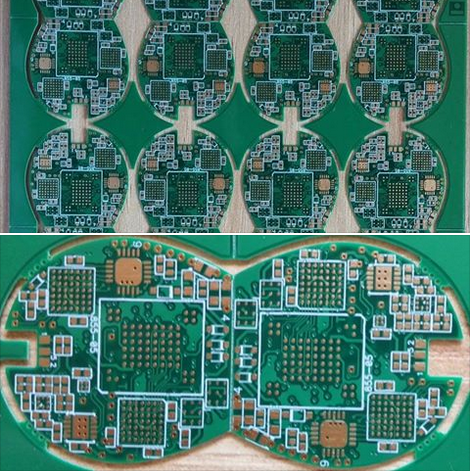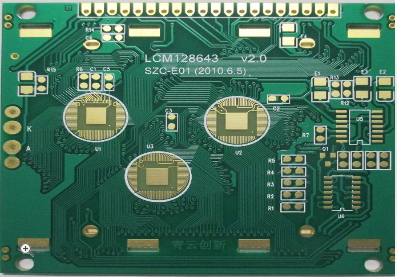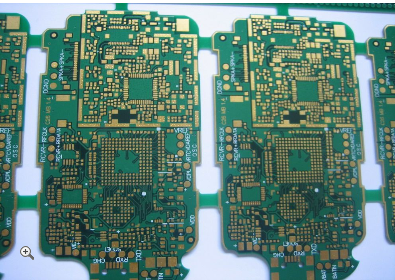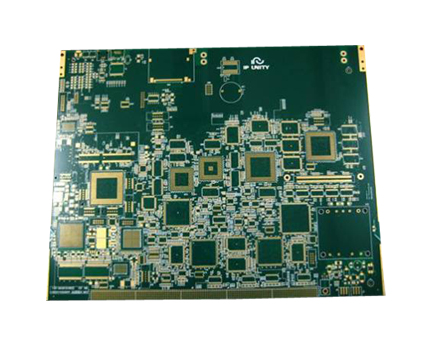-
 Agriculture
Agriculture
-
 Health-Care
Health-Care
-
 Environment
Environment
-
 Construction-Real-Estate
Construction-Real-Estate
-
 Tools-Hardware
Tools-Hardware
-
 Home-Garden
Home-Garden
-
 Furniture
Furniture
-
 Luggage-Bags-Cases
Luggage-Bags-Cases
-
 Medical-devices-Supplies
Medical-devices-Supplies
-
 Gifts-Crafts
Gifts-Crafts
-
 Sports-Entertainment
Sports-Entertainment
-
 Food-Beverage
Food-Beverage
-
 Vehicles-Transportation
Vehicles-Transportation
-
 Power-Transmission
Power-Transmission
-
 Material-Handling
Material-Handling
-
 Renewable-Energy
Renewable-Energy
-
 Safety
Safety
-
 Testing-Instrument-Equipment
Testing-Instrument-Equipment
-
 Construction-Building-Machinery
Construction-Building-Machinery
-
 Pet-Supplies
Pet-Supplies
-
 Personal-Care-Household-Cleaning
Personal-Care-Household-Cleaning
-
 Vehicle-Accessories-Electronics-Tools
Vehicle-Accessories-Electronics-Tools
-
 School-Office-Supplies
School-Office-Supplies
-
 Packaging-Printing
Packaging-Printing
-
 Mother-Kids-Toys
Mother-Kids-Toys
-
 Business-Services
Business-Services
-
 Commercial-Equipment-Machinery
Commercial-Equipment-Machinery
-
 Apparel-Accessories
Apparel-Accessories
-
 Security
Security
-
 Shoes-Accessories
Shoes-Accessories
-
 Vehicle-Parts-Accessories
Vehicle-Parts-Accessories
-
 Jewelry-Eyewear-Watches-Accessories
Jewelry-Eyewear-Watches-Accessories
-
 Lights-Lighting
Lights-Lighting
-
 Fabric-Textile-Raw-Material
Fabric-Textile-Raw-Material
-
 Fabrication-Services
Fabrication-Services
-
 Industrial-Machinery
Industrial-Machinery
-
 Consumer-Electronics
Consumer-Electronics
-
 Electrical-Equipment-Supplies
Electrical-Equipment-Supplies
-
 Electronic-Components-Accessories-Telecommunications
Electronic-Components-Accessories-Telecommunications
-
 Home-Appliances
Home-Appliances
-
 Beauty
Beauty
-
 Chemicals
Chemicals
-
 Rubber-Plastics
Rubber-Plastics
-
 Metals-Alloys
Metals-Alloys
- Masonry Materials
- Curtain Walls & Accessories
- Earthwork Products
- Fireproofing Materials
- Heat Insulation Materials
- Plastic Building Materials
- Building Boards
- Soundproofing Materials
- Timber
- Waterproofing Materials
- Balustrades & Handrails
- Bathroom & Kitchen
- Flooring & Accessories
- Tiles & Accessories
- Door, Window & Accessories
- Fireplaces & Stoves
- Floor Heating Systems & Parts
- Stairs & Stair Parts
- Ceilings
- Elevators & Escalators
- Stone
- Countertops, Vanity Tops & Table Tops
- Mosaics
- Metal Building Materials
- Multifunctional Materials
- Ladders & Scaffoldings
- Mouldings
- Corner Guards
- Decorative Films
- Formwork
- Building & Industrial Glass
- Other Construction & Real Estate
- Wallpapers/Wall panels
- HVAC System & Parts
- Outdoor Facilities
- Prefabricated Buildings
- Festive & Party Supplies
- Bathroom Products
- Household Sundries
- Rain Gear
- Garden Supplies
- Household Cleaning Tools & Accessories
- Lighters & Smoking Accessories
- Home Storage & Organization
- Household Scales
- Smart Home Improvement
- Home Textiles
- Kitchenware
- Drinkware & Accessories
- Dinnerware, Coffee & Wine
- Home Decor
- Golf
- Fitness & Body Building
- Amusement Park Facilities
- Billiards, Board Game,Coin Operated Games
- Musical Instruments
- Outdoor Affordable Luxury Sports
- Camping & Hiking
- Fishing
- Sports Safety&Rehabilitation
- Ball Sports Equipments
- Water Sports
- Winter Sports
- Luxury Travel Equipments
- Sports Shoes, Bags & Accessories
- Cycling
- Other Sports & Entertainment Products
- Artificial Grass&Sports Flooring&Sports Court Equipment
- Scooters
- Food Ingredients
- Honey & Honey Products
- Snacks
- Nuts & Kernels
- Seafood
- Plant & Animal Oil
- Beverages
- Fruit & Vegetable Products
- Frog & Escargot
- Bean Products
- Egg Products
- Dairy Products
- Seasonings & Condiments
- Canned Food
- Instant Food
- Baked Goods
- Other Food & Beverage
- Meat & Poultry
- Confectionery
- Grain Products
- Feminie Care
- Hair Care & Styling
- Body Care
- Hands & Feet Care
- Hygiene Products
- Men's Grooming
- Laundry Cleaning Supplies
- Travel Size & Gift Sets
- Room Deodorizers
- Other Personal Care Products
- Pest Control Products
- Special Household Cleaning
- Floor Cleaning
- Kitchen & Bathroom Cleaning
- Oral Care
- Bath Supplies
- Yellow Pages
- Correction Supplies
- Office Binding Supplies
- Office Cutting Supplies
- Board Erasers
- Office Adhesives & Tapes
- Education Supplies
- Pencil Cases & Bags
- Notebooks & Writing Pads
- File Folder Accessories
- Calendars
- Writing Accessories
- Commercial Office Supplies
- Pencil Sharpeners
- Pens
- Letter Pad/Paper
- Paper Envelopes
- Desk Organizers
- Pencils
- Markers & Highlighters
- Filing Products
- Art Supplies
- Easels
- Badge Holder & Accessories
- Office Paper
- Printer Supplies
- Book Covers
- Other Office & School Supplies
- Stationery Set
- Boards
- Clipboards
- Stamps
- Drafting Supplies
- Stencils
- Electronic Dictionary
- Books
- Map
- Magazines
- Calculators
- Baby & Toddler Toys
- Educational Toys
- Classic Toys
- Dress Up & Pretend Play
- Toy Vehicle
- Stuffed Animals & Plush Toys
- Outdoor Toys & Structures
- Balloons & Accessories
- Baby Food
- Children's Clothing
- Baby Supplies & Products
- Maternity Clothes
- Kids Shoes
- Baby Care
- Novelty & Gag Toys
- Dolls & Accessories
- Puzzle & Games
- Blocks & Model Building Toys
- Toddler Clothing
- Baby Clothing
- Kids' Luggage & Bags
- Arts, Crafts & DIY Toys
- Action & Toy Figures
- Baby Appliances
- Hobbies & Models
- Remote Control Toys
- Promotional Toys
- Pregnancy & Maternity
- Hygiene Products
- Kid's Textile&Bedding
- Novelty & Special Use
- Toy Weapons
- Baby Gifts
- Baby Storage & Organization
- Auto Drive Systems
- ATV/UTV Parts & Accessories
- Marine Parts & Accessories
- Other Auto Parts
- Trailer Parts & Accessories
- Auto Transmission Systems
- Train Parts & Accessories
- Universal Parts
- Railway Parts & Accessories
- Auto Brake Systems
- Aviation Parts & Accessories
- Truck Parts & Accessories
- Auto Suspension Systems
- Auto Lighting Systems
- New Energy Vehicle Parts & Accessories
- Auto Steering Systems
- Wheels, Tires & Accessories
- Bus Parts & Accessories
- Auto Performance Parts
- Cooling System
- Go-Kart & Kart Racer Parts & Accessories
- Air Conditioning Systems
- Heavy Duty Vehicle Parts & Accessories
- Auto Electrical Systems
- Auto Body Systems
- Auto Engine Systems
- Container Parts & Accessories
- Motorcycle Parts & Accessories
- Refrigeration & Heat Exchange Equipment
- Machine Tool Equipment
- Food & Beverage Machinery
- Agricultural Machinery & Equipment
- Apparel & Textile Machinery
- Chemical Machinery
- Packaging Machines
- Paper Production Machinery
- Plastic & Rubber Processing Machinery
- Industrial Robots
- Electronic Products Machinery
- Metal & Metallurgy Machinery
- Woodworking Machinery
- Home Product Manufacturing Machinery
- Machinery Accessories
- Environmental Machinery
- Machinery Service
- Electrical Equipment Manufacturing Machinery
- Industrial Compressors & Parts
- Tobacco & Cigarette Machinery
- Production Line
- Used Industrial Machinery
- Electronics Production Machinery
- Other Machinery & Industrial Equipment
- Camera, Photo & Accessories
- Portable Audio, Video & Accessories
- Television, Home Audio, Video & Accessories
- Video Games & Accessories
- Mobile Phone & Accessories
- Electronic Publications
- Earphone & Headphone & Accessories
- Speakers & Accessories
- Smart Electronics
- TV Receivers & Accessories
- Mobile Phone & Computer Repair Parts
- Chargers, Batteries & Power Supplies
- Used Electronics
- VR, AR, MR Hardware & Software
- Projectors & Presentation Equipments
- Other Consumer Electronics
- Cables & Commonly Used Accessories
- Computer Hardware & Software
- Displays, Signage and Optoelectronics
- Discrete Semiconductors
- Wireless & IoT Module and Products
- Telecommunications
- Connectors, Terminals & Accessories
- Development Boards, Electronic Modules and Kits
- Circuit Protection
- Sensors
- Isolators
- Audio Components and Products
- Integrated Circuits
- Power Supplies
- Relays
- RF, Microwave and RFID
- Electronic Accessories & Supplies
- Passive Components
- PCB & PCBA
- Air Quality Appliances
- Home Appliance Parts
- Heating & Cooling Appliances
- Small Kitchen Appliances
- Laundry Appliances
- Water Heaters
- Water Treatment Appliances
- Refrigerators & Freezers
- Personal Care & Beauty Appliances
- Major Kitchen Appliances
- Cleaning Appliances
- Second-hand Appliances
- Smart Home Appliances
- Other Home Appliances
- Energy Chemicals
- Inorganic Chemicals
- Basic Organic Chemicals
- Agrochemicals
- Admixture & Additives
- Catalysts & Chemical Auxiliary Agents
- Pigments & Dyestuff
- Coating & Paint
- Daily Chemicals
- Polymer
- Organic Intermediate
- Adhesives & Sealants
- Chemical Waste
- Biological Chemical Products
- Surface Treatment Chemicals
- Painting & Coating
- Chemical Reagents
- Flavor & Fragrance
- Non-Explosive Demolition Agents
- Other Chemicals
- Custom Chemical Services
Leading Edge PCB Manufacturing For Aerospace Innovation
In the high-stakes realm of aerospace, innovation is not merely an advantage—it is an absolute necessity. As aircraft, satellites, and spacecraft become increasingly sophisticated, the demand for advanced electronics that can withstand extreme conditions has never been greater. At the heart of these systems lies the printed circuit board (PCB), a critical component that enables everything from navigation and communication to propulsion control and monitoring. Leading edge PCB manufacturing for aerospace innovation represents the cutting edge of technology, where precision, reliability, and performance converge to push the boundaries of what is possible in the skies and beyond. This article delves into the pivotal role that state-of-the-art PCB manufacturing plays in driving aerospace advancements, exploring the technologies, materials, and processes that make it all possible.
Advanced Materials and Durability
The aerospace industry imposes some of the most rigorous demands on electronic components, including exposure to extreme temperatures, radiation, vibration, and pressure variations. To meet these challenges, leading edge PCB manufacturing utilizes advanced materials that go beyond standard FR-4 substrates. High-performance laminates such as polyimide, PTFE (Teflon), and ceramic-filled composites are employed for their exceptional thermal stability, low dielectric loss, and resistance to environmental stressors. These materials ensure that PCBs can operate reliably in the harsh conditions of aerospace applications, from the vacuum of space to the intense heat of atmospheric re-entry.
Moreover, durability is further enhanced through specialized coatings and finishes. Conformal coatings, for instance, protect PCBs from moisture, chemicals, and contaminants, while gold or silver finishes improve conductivity and corrosion resistance. The selection of materials is meticulously tailored to each application, whether for commercial aircraft, military drones, or satellite systems, ensuring longevity and minimal failure rates. This focus on material science is a cornerstone of innovation, enabling lighter, more efficient, and more resilient aerospace electronics.
Precision Engineering and Miniaturization
As aerospace systems evolve, there is a growing need for smaller, lighter, and more densely packed electronics. Leading edge PCB manufacturing addresses this through precision engineering techniques such as high-density interconnect (HDI) technology and microvia drilling. HDI PCBs feature finer lines and spaces, smaller vias, and higher connection pad densities, allowing for more components to be integrated into a compact form factor. This is particularly crucial for applications like avionics, where space and weight are at a premium, and every gram saved can translate to significant fuel efficiency or payload capacity.
Advanced manufacturing processes, including laser drilling and automated optical inspection (AOI), ensure that these intricate designs are produced with utmost accuracy. Tolerances are held to microscopic levels, minimizing the risk of defects and ensuring consistent performance. The drive toward miniaturization also supports the integration of emerging technologies, such as Internet of Things (IoT) sensors and artificial intelligence (AI) processors, into aerospace systems, paving the way for smarter, more autonomous vehicles and missions.
Rigorous Testing and Compliance
In aerospace, failure is not an option. Therefore, leading edge PCB manufacturing incorporates exhaustive testing protocols to validate performance and reliability. Every PCB undergoes a battery of tests, including thermal cycling, vibration testing, and accelerated life testing, to simulate years of operation in extreme environments. These tests help identify potential weaknesses and ensure that the boards can withstand the demands of aerospace applications without compromising safety or functionality.
Compliance with international standards, such as AS9100 for aerospace quality management and IPC-6012 for rigid PCB performance, is non-negotiable. Manufacturers must adhere to strict documentation and traceability requirements, ensuring that every component can be tracked from raw material to final assembly. This rigorous approach to quality assurance not only mitigates risks but also fosters trust among aerospace engineers and stakeholders, who rely on these PCBs for mission-critical systems.
Innovation in Thermal Management
Thermal management is a critical consideration in aerospace electronics, where excessive heat can lead to component failure or reduced lifespan. Leading edge PCB manufacturing incorporates innovative solutions to dissipate heat effectively, such as embedded heat sinks, thermal vias, and metal-core substrates. These designs enhance thermal conductivity, drawing heat away from sensitive components and distributing it evenly across the board or to external cooling systems.
Additionally, advanced simulation and modeling tools are used during the design phase to predict thermal behavior and optimize layout for maximum heat dissipation. This proactive approach ensures that PCBs can maintain optimal operating temperatures even in high-power applications, such as electric propulsion systems or radar arrays. By addressing thermal challenges head-on, manufacturers contribute to the overall efficiency and reliability of aerospace innovations.
Collaboration and Customization
The complexity of aerospace projects often requires close collaboration between PCB manufacturers and aerospace companies. From initial design to production, manufacturers work hand-in-hand with engineers to develop customized solutions that meet specific mission requirements. This partnership allows for iterative prototyping, rapid design adjustments, and the incorporation of feedback throughout the development cycle.
Customization extends to every aspect of PCB manufacturing, including layer count, material selection, and finishing options. Whether for a low-earth orbit satellite or a next-generation fighter jet, PCBs are tailored to deliver peak performance. This collaborative, client-focused approach not only accelerates innovation but also ensures that the final product aligns perfectly with the visionary goals of the aerospace industry.
REPORT































































































































































































































































































































































































































































































































































































